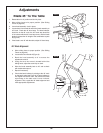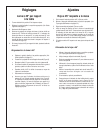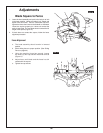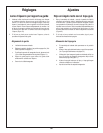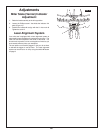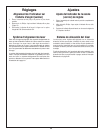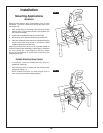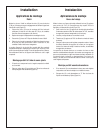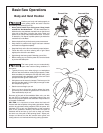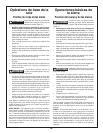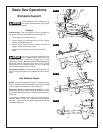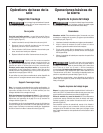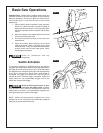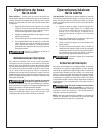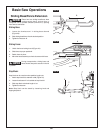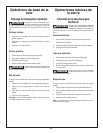
44
Basic Saw Operations
Body and Hand Position
P
osition your body and hands properly to
make cutting easier and safer. Observe
the following instructions (Figure 15).
•
Never place hands near cutting area. Keep hands
outside the “No Hands Zone”.
The “No Hands Zone” is
d
efined as the area between marked lines on the left and
right side of the Base, including the entire Table and
portion of the Fence within these marked lines. This zone
is labeled by “No Hands” symbols placed just inside the
marked lines on the Base.
• Hold workpiece firmly to the fence to prevent movement.
• Keep hands in position until trigger has been released
and blade has stopped completely.
• Keep feet firmly on the floor and maintain proper balance.
• Follow the miter arm when mitering left or right. Stand
slightly to the side of the saw blade.
• Sight through the lower guard if following a pencil line.
• Before making any cut, with the power off, lower the blade
to preview the blade path.
The lower guard may not automatically
open under certain cutting conditions. If
this occurs:
• Typically this may occur when trying to cut workpieces
that are near the maximum cutting height capacity. Under
these conditions, the workpiece can stop the lower guard
movement before the downward motion of the arm could
preopen the lower guard. If this occurs:
• Workpiece must be securely clamped. This frees your left
hand to raise the guard
1 by the lip 2 just enough to clear
the workpiece (Figure 16).
•
Start the saw and begin your cut.
• Once you have cleared the position where the lower
guard may bind, release the guard and it will continue to
raise automatically as you cut.
Be aware of the path of the sawblade. Make a dry run with
the saw OFF by conducting a simulated cutting cycle, and
observe the projected path of the sawblade. Keep hands out
of the path of sawblade.
DRY RUN—It is important to know where the blade will
intersect with the workpiece during cutting operations.
Always
perform the simulated cutting sequence
with the power tool
switched OFF to gain an understanding of the projected
path of the sawblade. Mentally note where the path of
sawblade will fall and set up your work to keep your hands
and arms out of the path of the spinning blade. Adjust your
clamps and fences so that the smooth lower guard and
cutting action is not interfered with during cutting operation.
Incorrect UseCorrect Use
Incorrect UseCorrect Use
FIG. 15
FIG. 16
1
2
WARNING
!
WARNING
!



